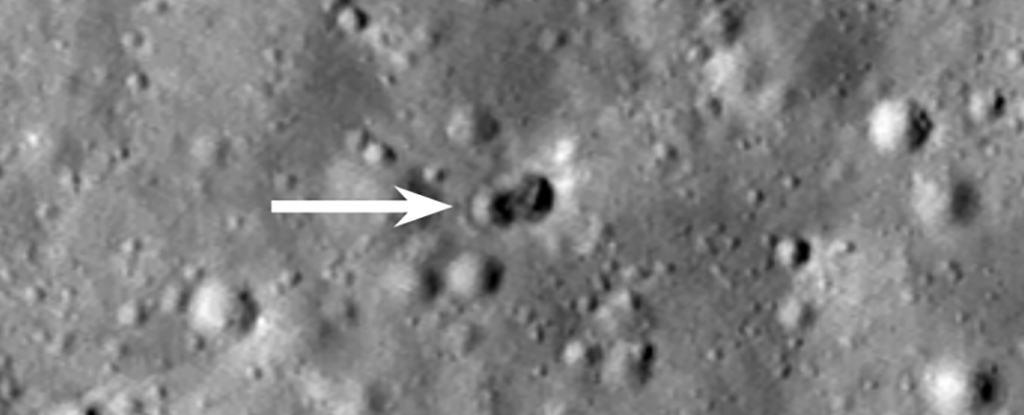Researchers think they’ve finally confirmed the identity of an object that smashed into the Moon on 4 March 2022 – and explained why the piece of space debris left two craters on the lunar surface, rather than one.
The object, according to a team of engineers-turned-detectives from the University of Arizona, is the Long March 3C rocket body discarded from China’s 2014 Chang’e 5-T1 mission. That mission was designed to run tests for the lunar lander that followed.
As for the double crater, an additional payload on the rocket – undeclared by the China National Space Administration (CNSA) – is most likely the cause.
However, without a closer look, it’s going to be hard to determine what it was: the craters are on the far side of the Moon, which is never directly visible from Earth.
“This is the first time we see a double crater,” says aerospace engineer Tanner Campbell, from the University of Arizona.
“We know that in the case of Chang’e 5 T1, its impact was almost straight down, and to get those two craters of about the same size, you need two roughly equal masses that are apart from each other.”
Astronomer had tracked the object, given the name WE0913A, from its discovery in the Catalina Sky Survey in March 2015 to its final meeting with the lunar surface last year.
Initially it was assumed to be a Space X booster, but suspicions soon fell on China’s 2014 mission.
In this latest study, the team analyzed the unidentified object’s movement and changes in its reflected light just prior to impact to figure out exactly what it was.
The rotation of the object through space – tumbling end-over-end – pointed to a second mass acting as a counterweight to the engines on one side of the rocket, which also explains the double crater.
The CSNA isn’t saying what the extra payload was, and has been denying it’s their rocket at all.
“Obviously, we have no idea what it might have been – perhaps some extra support structure, or additional instrumentation, or something else,” says Campbell.
“We probably won’t ever know.”
There’s nothing unusual in spacecraft discarding their rockets into the emptiness of space, or even in these rockets crashing into the Moon, but this latest incident is a reminder that space junk is becoming a growing problem.
There’s the potential for serious damage to satellites in orbit, and to the International Space Station – and while a lot of debris burns up in the atmosphere before it has a chance to reach Earth, objects do get through.
The researchers behind this latest study say that anything that heads into space needs to be carefully tracked.
“Once you’re putting more and more objects on the Moon, it becomes extremely important that we not only track the object, but also understand what they are going to do once they get there,” says Roberto Furfaro, a mechanical engineer at the University of Arizona.
The research has been published in the Planetary Science Journal.





